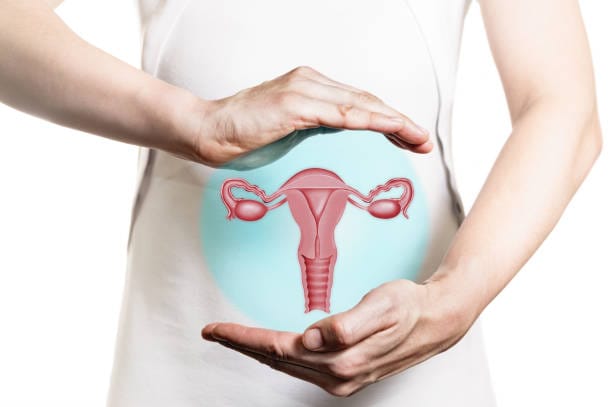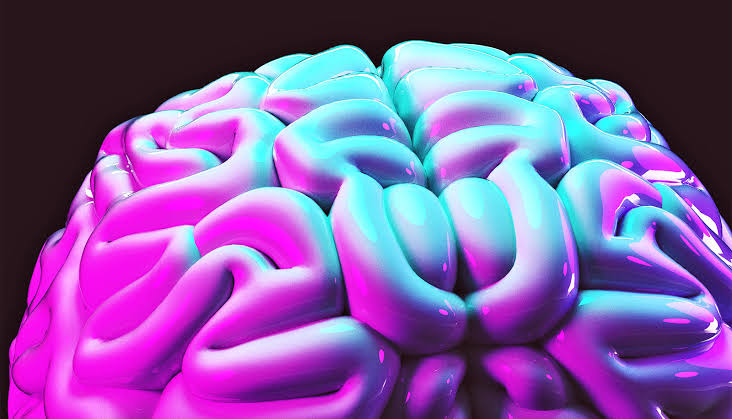Bringing new life into the world is often celebrated with joy, balloons, flowers, and endless admiration. The glow of pregnancy, the beauty of childbirth, and the soft coos of a newborn paint a picture that seems almost divine. Yet, beneath this shimmering surface, for many new mothers, a shadow lurks—a persistent, suffocating sadness that feels completely out of place. This is postpartum depression—a complex, misunderstood, and deeply human experience that affects not only the mother but ripples through the entire fabric of her life, including her baby, partner, and community.
Postpartum depression is more than just a case of the “baby blues.” It is a serious mental health condition that can begin days, weeks, or even months after childbirth. It can steal the joy from a woman’s first months with her baby and make her feel isolated, confused, and ashamed. But despite its prevalence and depth, many still suffer in silence, often afraid to admit that motherhood isn’t feeling like they thought it would.
Let’s explore what postpartum depression really is—how it develops, what it feels like, what causes it, and most importantly, how healing is possible. Understanding postpartum depression doesn’t just help women—it helps everyone who loves them.
The Difference Between Baby Blues and Postpartum Depression
It’s normal for new mothers to feel emotional after childbirth. In fact, up to 80% of women experience a period of mood swings, tearfulness, irritability, and anxiety known as the “baby blues.” These symptoms usually begin within the first few days postpartum and tend to resolve on their own within two weeks.
But postpartum depression is different. It lingers. It grows. It can feel all-consuming. Unlike the baby blues, postpartum depression doesn’t just fade with time. It can interfere significantly with a mother’s ability to function, bond with her baby, or enjoy daily life.
While the baby blues are often linked to the sudden hormonal crash after delivery, postpartum depression is deeper. It can feel like drowning in sadness, becoming unrecognizable to yourself, or watching life happen through a pane of foggy glass. A woman may smile at visitors but crumble when they leave. She might care for her baby out of obligation, while inwardly feeling numb, angry, or even resentful.
Knowing this difference is critical—not just for the mother but for those around her. The world needs to understand that postpartum depression is not weakness. It is not a failure. It is a medical condition, and it is treatable.
The Faces of Postpartum Depression
Postpartum depression doesn’t wear a single face. It doesn’t always look like crying in a dark room. Sometimes, it looks like anger. Other times, it’s anxiety. For some women, it’s withdrawal and numbness; for others, it’s obsessive worry and panic. There is no universal script.
Some women may fear they’re not bonding with their baby, that something must be wrong with them because they’re not instantly glowing with maternal love. Others might feel intense guilt over imagined shortcomings or believe their baby would be better off without them. Intrusive thoughts—unwanted, scary ideas about harm coming to the baby—can invade even the most loving mother’s mind, causing shame and terror.
Sleep becomes a battleground. Exhaustion is overwhelming, yet rest doesn’t bring relief. Eating habits change. Concentration falters. Interest in activities once enjoyed fades away. Relationships suffer. Mothers may lash out at partners or retreat inwardly. The sense of isolation can be profound, even in a crowded room.
This variability makes postpartum depression hard to recognize, even harder to diagnose. A smiling mother on Instagram may be crumbling inside. A woman hosting a baby shower might go home to cry alone. The truth is, postpartum depression is an invisible illness cloaked in expectations and stigma.
When Does Postpartum Depression Begin?
While many assume postpartum depression hits immediately after childbirth, it doesn’t always follow such a neat timeline. It can begin within days or weeks of delivery, but for some, it doesn’t emerge until months later—sometimes up to a year after the baby is born.
This delayed onset can be confusing. A woman may think she’s past the vulnerable stage, only to find herself suddenly overwhelmed by sadness or anxiety. Some mothers report symptoms after they stop breastfeeding or return to work. Others say it crept in after a stressful life event, a difficult baby’s sleep regression, or simply out of nowhere.
This delayed timeline can also make it easier to dismiss or mislabel. “You’re just tired,” someone might say. “Maybe it’s just hormones.” But while hormones do play a role, postpartum depression is far more than fluctuating estrogen and progesterone. It’s a deeply rooted condition, involving psychological, biological, social, and emotional components.
What Causes Postpartum Depression?
There is no single cause of postpartum depression—rather, it’s the result of a complex mix of factors that collide at a uniquely vulnerable time. The first and most immediate trigger is the hormonal crash that happens after childbirth. Estrogen and progesterone levels drop dramatically within hours after delivery, and for some women, this sudden shift can destabilize mood regulation.
But not every woman with low hormone levels develops depression. That’s where genetics, history, and life context come in. A woman with a personal or family history of depression or anxiety is at greater risk. So is someone who had fertility struggles, a traumatic birth, or a prior miscarriage. If a woman had postpartum depression after a previous baby, her chances of experiencing it again are higher.
Environmental factors matter too. Lack of sleep is almost a guarantee in the postpartum period—but chronic sleep deprivation can worsen or trigger depressive symptoms. The absence of social support, a difficult relationship with a partner, financial stress, or isolation can amplify emotional strain.
Some mothers may struggle with breastfeeding or experience guilt around it. Others might be parenting a baby with health issues or facing the demands of other young children. All of this contributes to a perfect storm where a woman’s mental health can be easily compromised.
How Postpartum Depression Affects the Mother-Infant Bond
One of the most painful aspects of postpartum depression is the way it can interfere with bonding. A mother may feel distant from her baby, as if they’re strangers rather than kin. She may go through the motions of care—feeding, changing, rocking—without the emotional connection she hoped to feel.
This lack of connection is not a reflection of her love or her worth. It’s a symptom of her illness. And the guilt that follows can become a vicious cycle. She doesn’t feel bonded, so she feels ashamed, which deepens her depression, which makes bonding even harder.
Some women fear admitting these feelings because they believe they’ll be judged—or worse, have their baby taken from them. But struggling to connect does not make someone a bad mother. It makes her a mother who needs help and deserves compassion.
Interestingly, studies show that when a depressed mother receives treatment and support, her relationship with her baby can flourish. Babies are incredibly resilient, and bonding is not something that has to happen instantly—it can be built, repaired, and nurtured over time.
The Role of Partners and Families
Postpartum depression rarely affects only the mother. The entire family dynamic shifts in its wake. Partners may feel helpless, confused, or even rejected. They might not understand why the person they love seems so changed. Some respond by withdrawing; others try to fix things and become frustrated when their efforts don’t help.
It’s important to acknowledge that postpartum depression is not a failure of love. It’s not something a partner can cure with flowers or extra diapers. But what they can offer—what makes a world of difference—is patience, non-judgment, and consistent presence.
Family members, too, play a crucial role. Grandparents, siblings, friends—anyone close to the new mother—can help simply by checking in, offering to help with household tasks, or just sitting with her without expecting smiles or gratitude. Recognizing signs of distress and encouraging her to seek help can be life-saving.
And it’s worth noting: partners themselves can experience paternal postpartum depression, especially if they feel unsupported or overwhelmed. Postpartum mental health is a family issue, not just a maternal one.
Screening, Diagnosis, and Seeking Help
One of the most powerful tools we have in fighting postpartum depression is early screening. Health professionals increasingly use brief questionnaires like the Edinburgh Postnatal Depression Scale (EPDS) during postpartum checkups to identify symptoms early. But even with these tools, many cases go undetected—either because symptoms are downplayed or because women fear the stigma of speaking up.
Diagnosis is typically made by a mental health provider after a clinical interview. There’s no blood test for postpartum depression. It’s diagnosed by understanding a woman’s feelings, experiences, and history. The key symptoms include persistent sadness, loss of interest in activities, sleep and appetite changes, fatigue, feelings of worthlessness or guilt, difficulty concentrating, and thoughts of death or harm.
Reaching out for help is often the hardest step. It requires vulnerability in a culture that still glorifies the image of the selfless, tireless, always-smiling mother. But breaking that silence is a radical act of self-love. It’s saying: “I matter too.” And healing can only begin when that voice is heard.
Treatment Options and Hope for Recovery
The good news is that postpartum depression is highly treatable. The most effective treatments often involve a combination of therapy, medication, and support.
Psychotherapy, particularly cognitive-behavioral therapy (CBT) and interpersonal therapy (IPT), is considered a first-line treatment. These approaches help women challenge negative thought patterns, build coping skills, and improve their relationships. Therapy offers a safe, nonjudgmental space to process feelings that may feel too heavy to carry alone.
Antidepressant medications can also be effective, especially in moderate to severe cases. Many SSRIs (selective serotonin reuptake inhibitors) are considered safe for breastfeeding, though each case should be evaluated individually. For some women, the relief from medication can be life-changing—restoring energy, lifting the emotional fog, and helping them feel more like themselves.
In recent years, new treatments have emerged. Brexanolone, the first drug specifically approved for postpartum depression, has shown promise for women with severe symptoms, though it requires an inpatient setting. Other hormonal therapies and non-drug interventions like transcranial magnetic stimulation (TMS) are also being explored.
But no matter the path, the most important message is: recovery is possible. It may take time, but it does come. With the right support, a woman can move from surviving to thriving.
Breaking the Stigma and Changing the Conversation
For too long, postpartum depression has lived in the shadows. Despite affecting up to 1 in 7 mothers, it remains cloaked in shame. Society still romanticizes motherhood as purely blissful, and when reality doesn’t match the ideal, women feel like failures.
We need to change this narrative. We need to tell the truth—that motherhood is both beautiful and brutal, exhilarating and exhausting. That struggling doesn’t make you weak; it makes you human. That help is available and healing is real.
Raising awareness through education, media, and open conversations can help dismantle the stigma. Normalizing therapy, validating emotions, and supporting vulnerable mothers is not just good for them—it’s good for babies, families, and communities.
And perhaps most importantly, we need to teach women that they are not alone. Others have walked this path and found light again.
Conclusion: From Darkness to Light
Postpartum depression is a journey through shadowed terrain, but it is not the end of the story. It’s a chapter—painful, yes, but also transformative. It reveals the raw truth of what it means to be human, to need, to feel, to break and to rebuild.
For the woman sitting in a dark room, wondering why joy feels so far away, there is hope. For the partner watching helplessly, there is help. For the families trying to understand, there is wisdom.
Postpartum depression is not a flaw in the mother. It’s a call for compassion, understanding, and action. And in answering that call, we create a world where mothers are not left to suffer in silence but are lifted, healed, and celebrated for the full spectrum of who they are.
Because every mother deserves not only to survive childbirth—but to thrive in the life that follows.






